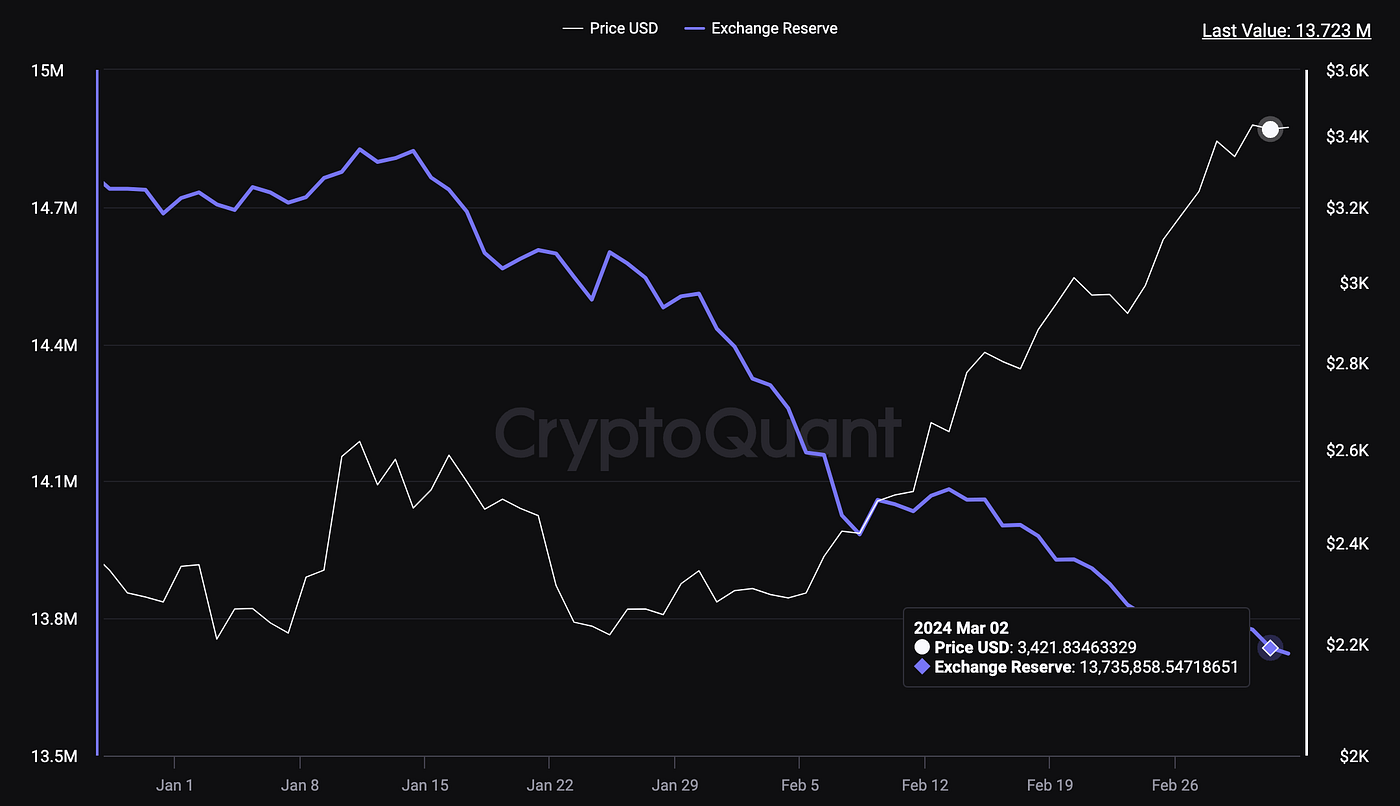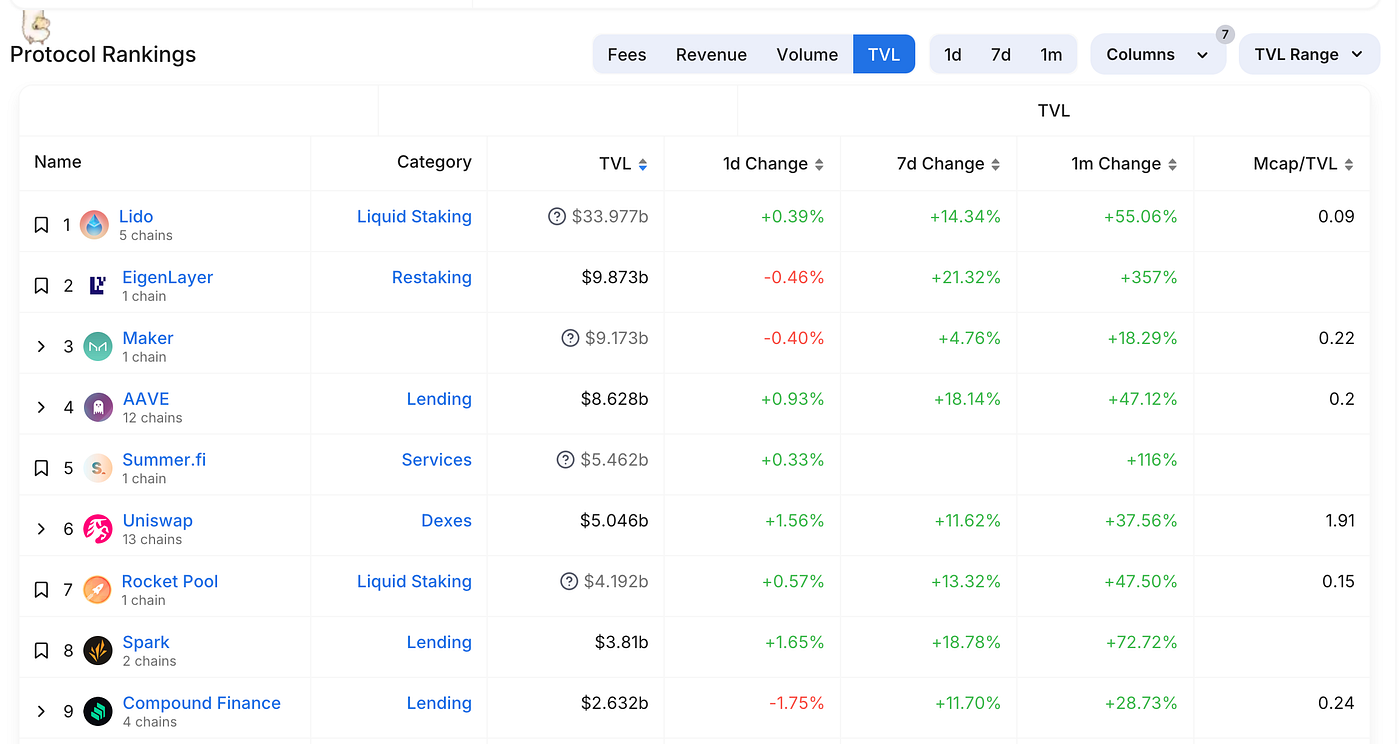Etherscan Research: An Overview of the EigenLayer Ecosystem, Examining the Advantages and Disadvantages of Ethereum Re-staking
Original Title: “An Early Look at Ethereum's Restaking Landscape”
Author: TY, Etherscan Blog
Compiled by: Elvin, ChainCatcher
In the past two months, the total value locked (TVL) on EigenLayer has increased from $1 billion on December 23 to $9.5 billion, while the TVL of liquidity re-staking tokens (LRT) has surged from $152 million at the beginning of the year to over $4 billion as of February 24, showing significant growth momentum in re-staking.
The community is particularly enthusiastic, anticipating a potential airdrop through the accumulation of EigenLayer points and earning additional re-staking rewards with the same ETH.
In this article, we will review Ethereum staking and compare it with re-staking. We will explore case studies and explain some of the advantages and concerns related to re-staking for those looking to get a piece of the action.
Proof of Stake (PoS) Ethereum and Security
Ethereum underwent a merge, transforming its security model into a PoS consensus mechanism. To ensure the security of Ethereum under PoS, anyone can participate as a validator by depositing 32 ETH into the Beacon Chain, granting them the right to propose new blocks and occasionally attest to new blocks. Validators earn rewards for honest work, but dishonest actions may lead to a partial or total slashing of the staked ETH.
As of the time of writing, over 25% of the ETH supply (31,061,263 ETH out of 120,142,088.89 ETH) has been staked. The total market cap of ETH is $400 billion, while the total value of staked ETH is $100 billion. This means that executing a 51% attack on Ethereum (where the attacker controls the majority of validators) would require deploying over $100 billion in capital (assuming current network validators are honest) to successfully influence Ethereum in their favor.
Additionally, the validator attrition limit prevents new validators from entering the network simultaneously. Under the current limit of 15 per cycle, an attack could take over six months to execute. Furthermore, the current supply of ETH on exchanges is 13,735,858.547 ETH (approximately 11.43%), which is less than half of the total staked ETH, making it increasingly difficult to purchase enough ETH to attack the network.

Source: cryptoquant.com
The Liquid Stake protocol allows more users to delegate ETH to node operators instead of running a validator client themselves, enabling broader participation in PoS. In return, users receive liquid staking tokens (LST) that they can freely use in DeFi activities, unlike native staking, which requires locking ETH on the Beacon Chain. LST represents a promise to redeem back the delegated ETH and the earned rewards.
The new ETH staking primarily targets liquid staking protocols, even sparking discussions about changing staking issuance.
Re-staking and Its Cases
In the long run, Ethereum has taken over three years to establish its crypto-economic security, staking over 25% of ETH. The staked ETH is currently valued at over $100 billion, surpassing the total market cap of the next major networks like BSC ($62 billion) and Solana ($59 billion) (all figures as of the time of writing).

Source: https://beaconscan.com/stat/voted
New protocols seeking to establish robust crypto-economic security will require more time and resources to achieve similar feats. They must seek new capital that has not yet protected existing blockchain protocols. This will further dilute capital among various blockchain protocols and lead to security fragmentation.
The re-staking concept introduced by EigenLayer involves ETH validators/stakers choosing to use their staked ETH to secure additional protocols (or active validation services). This approach allows developers to launch new protocols more quickly by leveraging Ethereum's security.
Since the launch of the first phase on the Ethereum mainnet on June 23, EigenLayer has accumulated over $9.5 billion in total locked value (TVL), making it the second-largest protocol on Ethereum by TVL. Its liquidity re-staking tokens (LRT), akin to LST staking ETH, currently have a TVL of over $4 billion.

Source: https://defillama.com/chain/Ethereum
According to EigenLayer's website, there are currently 13 AVS projects building within its ecosystem, utilizing re-staked ETH to enhance the security of their projects. The first AVS, EigenDA (developed by EigenLabs), is currently undergoing testing on the testnet and is expected to launch on the mainnet in the first half of 2024.
For an overview of the re-staking market in February 2024, read the blog here.
What Are the Advantages and Concerns of Re-staking?
As active validation services are still undergoing rigorous testing and have not yet launched on the mainnet, the full range of benefits and concerns has yet to be realized.
Nevertheless, here are some preliminary advantages and concerns about re-staking gathered from the community:
Advantages
- Shared Security
Protocols built on EigenLayer can benefit from pooled security without incurring additional startup costs to assemble a validator base, especially in PoS networks.
Sreeram Kannan, the founder of EigenLayer, states that shared security has been significantly reinforced. If $1 billion in equity is re-staked and shared across all protocols, the cost to attack any one of those protocols would be $1 billion.
This raises the question: if EigenLayer is a permissionless protocol that anyone can build on, will pooled security incentivize individuals to take on more security risks funded by others?
The impending changes to the shared security model may introduce attributed security, allowing AVS to purchase claims on a certain amount of pooled (re-staked) capital. If an AVS encounters issues, claims can be redistributed to AVS users, making them whole. This is similar to insurance.
- Capital Efficiency
Re-staked ETH will enjoy more validation rewards for AVS than standalone Ethereum.
Concerns
- Centralization Risk
In addition to regular ETH staking yields, validators utilizing AVS will be able to offer higher APYs to their delegators. Validators need to understand the risks of obtaining additional AVS rather than blindly leveraging every AVS for promised yields.
Re-stakers may naturally tend to delegate their ETH to validators to minimize slashing risks and maintain higher yields. This could develop into a feedback loop where validators capable of providing sustainable higher yields attract more capital in the long run, potentially leading to monopolies and centralization risks.
- Dilution of Ethereum's Consensus
Like other blockchain communities, Ethereum's social consensus is also fragile. If social consensus is ruthlessly exploited, it could lead to community splits and chain fractures.
Re-staking should maintain Ethereum's minimalism and avoid introducing unnecessary "scope" that could dilute the role of Ethereum's consensus. If re-staked AVS becomes too large to fail, it could trigger social consensus forks.
Conclusion
Re-staking has quickly become a hot topic within the community, providing additional incentives for accumulating EigenLayer points and potential airdrop opportunities. It is also a promising technology that allows Ethereum to protect more useful protocols.
The team behind EigenLayer is not rushing to advance this process, as they consider multiple perspectives from the community and core developers, gradually making informed updates to the protocol.












